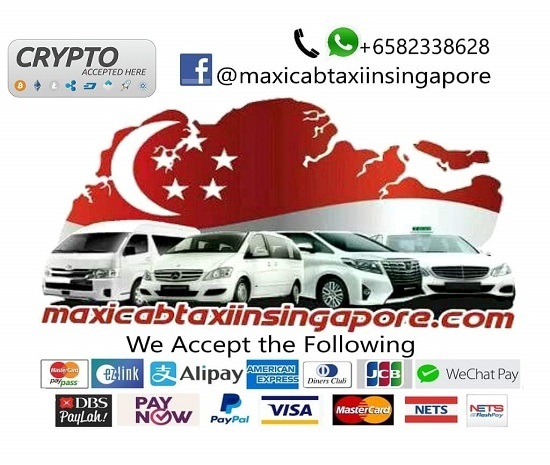[ad_1]
Besides the National Day Parade (and the PM’s NDP speech), we often take National Day for granted, a mere day off to take a break from our work. The boring social studies story of “fishing-village-turn-powerhouse” we’ve heard a million times may not leave as much impression to us as it did when we first heard of it. We might even be getting numb to the repeated emphasis on “regardless of race, language, and religion”.
But there really is quite a lot to appreciate about our collective ‘Singaporean’ identity. This collective identity first evolved into existence thanks to the diverse migrant settlers interactions over the years of our young history. Everybody brought their traditions from back home, threw in their spices and together brewed up a fresh pot of ‘Singaporeanness’! And today, modernity and tradition blend together in our daily lives.
We often talk about this ‘melting pot’ of cultures. But how much do we actually know about the roots of our cultures? Many of us feel detached from the ancestral lands. I mean, can you confidently survive in Malaysia with your kopak Melayu? Bargain in China in Mandarin? Do you know why your grandmother’s Made-in-India saree is so special to her?
There is always a story behind each tradition, each dialect and each ethnic group. A story that you might not know quite as well as you should. And could be fun to explore outside the pages of a history book…So it’s time to balik kampung!
Balik Kampung for the Holidays
This national day, we are travelling back to explore where we came from but never been. Trace back the journey of our forefathers to their homelands before they settled here. What were their lives like before they got here? Where did our traditions come from? Where can we get an authentic bowl of our grandma’s curry in the motherland?
In this series we look at the places where our ancestors came from that would be cool to visit today. We’ve picked out places that not only give you a feel of your origins, but are also really fun and interesting places to enjoy a holiday. You don’t have to be a serious history buff to enjoy these places k! We’ve include a mix of destinations – some are big cities that have all the tourist luxuries while getting a taste of the local culture. Others are authentic kampung style places that will transport you further back to simpler times.
Feature Image: CC 2.0 / Yusoff Abdul Latiff

1) Balik Kampung Destinations
Jump to: Chinese | Malay | Indian | Eurasian | Peranakan | Armenian

Balik Kampung Destinations
Interesting Cultural Places to Visit Today for a Feel of Yesterday
Follow the blue buttons to read the travel guide exploring each balik kampung destination.

Singapore Chinese
In the 19th and early 20th century, Chinese traders came to our shore, predominantly from Malacca and Penang. At the same time, the poverty in China drove plenty of Chinese coolies to Singapore, serving as the backbone of Singapore’s industry. Most of them settled in Chinatown and often grouped themselves according to their dialect groups: Cantonese, Hainanese, Hakka, Hokkien, and Teochew. The British appointed Chinese leaders to govern the growing Chinese community through religious-oriented Chinese civil societies.
Today, you can find plenty of landmarks left by the first Chinese settlers such as the Majestic Theatre and Thian Hock Keng Temple. If you wander around Chinatown and Telok Ayer, you can see traces of Chinese settlement in the area — from gambling den to clove and nutmeg plantations to coolie depots.
The current food spread in Chinatown may not be a good representative of the old, traditional Chinese cuisine in the past. Head to Spring Court – the oldest Chinese restaurants in Singapore – to indulge in a mix of Cantonese and Hokkien dishes. Otherwise, our hawker centres do sell lots of traditional Chinese dishes like abacus seeds, kong ba pao, egg tarts, suckling pig, fuzhou fishballs, and lor mee.
Fujian
Kampung of: The Hokkien forefathers
Your Grandfather’s Road: Amoy Street, Hokkien Street, Seah Im Road, Ann Siang Hill, Boon Lay Way
<img data-attachment-id="24164" data-permalink="https://travelblog.expedia.com.sg/experience/balik-kampung/attachment/bk-telok_ayer/" data-orig-file="https://i0.wp.com/travelblog.expedia.com.sg/wp-content/uploads/2018/08/bk-Telok_Ayer.jpg?fit=1600%2C1067&ssl=1" data-orig-size="1600,1067" data-comments-opened="1" data-image-meta=""aperture":"0","credit":"","camera":"NIKON D500","caption":"","created_timestamp":"1488883707","copyright":"ANDREW_JK_TAN","focal_length":"0","iso":"0","shutter_speed":"0","title":"","orientation":"1"" data-image-title="bk-Telok_Ayer" data-image-description="
Telok Ayer
” data-medium-file=”https://i0.wp.com/travelblog.expedia.com.sg/wp-content/uploads/2018/08/bk-Telok_Ayer.jpg?fit=800%2C534&ssl=1″ data-large-file=”https://i0.wp.com/travelblog.expedia.com.sg/wp-content/uploads/2018/08/bk-Telok_Ayer.jpg?fit=1024%2C683&ssl=1″ class=”alignnone size-large wp-image-24164″ src=”https://i0.wp.com/travelblog.expedia.com.sg/wp-content/uploads/2018/08/bk-Telok_Ayer.jpg?resize=1024%2C683&ssl=1″ alt=”Telok Ayer” width=”1024″ height=”683″ srcset=”https://i0.wp.com/travelblog.expedia.com.sg/wp-content/uploads/2018/08/bk-Telok_Ayer.jpg?resize=1024%2C683&ssl=1 1024w, https://i0.wp.com/travelblog.expedia.com.sg/wp-content/uploads/2018/08/bk-Telok_Ayer.jpg?resize=800%2C534&ssl=1 800w, https://i0.wp.com/travelblog.expedia.com.sg/wp-content/uploads/2018/08/bk-Telok_Ayer.jpg?resize=768%2C512&ssl=1 768w, https://i0.wp.com/travelblog.expedia.com.sg/wp-content/uploads/2018/08/bk-Telok_Ayer.jpg?resize=300%2C200&ssl=1 300w, https://i0.wp.com/travelblog.expedia.com.sg/wp-content/uploads/2018/08/bk-Telok_Ayer.jpg?w=1600&ssl=1 1600w” sizes=”(max-width: 1024px) 100vw, 1024px” data-recalc-dims=”1″>
Our Hokkien forefathers hailed from the southern coastal Fujian and mostly settled around Amoy St and Telok Ayer St, before expanding to Hokkien St and China St.
The early settlers were active in maritime trading along the Singapore River. Because of their maritime activity, many Hokkiens worshipped Taoist goddess, the Heavenly Mother Ma Zhu, at the Thian Hock Kheng Temple. The goddess is the protectress of sailors.
Places to Visit in China for Culture & Heritage
Eastern Guangdong
Kampung of: Teochew and Cantonese forefathers
Your Grandfather’s Road: Choa Chu Kang, Peck Seah Street, Yong Siak Street, Heng Mui Keng Terrace

The Teochew came from Chaoshan region in eastern Guangdong and formed a community along the banks of the Singapore River. They were involved in various commercial sectors (Circular Road and South Bridge Road), fisheries, as well as gambier and pepper plantations (Choa Chu Kang). The early Teochew and Hokkien settlers didn’t get along well during the British colonial period in spite of their similarities. Today, many Teochew reside in the Hougang area. Ngee Ann Kongsi is the most prominent Teochew association.
Teochew Heritage in Guangzhou
Guang Dong, Hong Kong & Macau
Kampung of: Cantonese and Portuguese
Your Grandfather’s Road: Pagoda Street, Eu Tong Sen Street, South Bridge Road, Upper Cross Street, New Bridge Road and Bukit Pasoh Road
<img data-attachment-id="24163" data-permalink="https://travelblog.expedia.com.sg/experience/balik-kampung/attachment/bk-singaporechinatown/" data-orig-file="https://i2.wp.com/travelblog.expedia.com.sg/wp-content/uploads/2018/08/bk-singaporechinatown.jpg?fit=1600%2C900&ssl=1" data-orig-size="1600,900" data-comments-opened="1" data-image-meta=""aperture":"0","credit":"","camera":"","caption":"","created_timestamp":"0","copyright":"","focal_length":"0","iso":"0","shutter_speed":"0","title":"","orientation":"1"" data-image-title="bk-singaporechinatown" data-image-description="
Singapore Chinatown
” data-medium-file=”https://i2.wp.com/travelblog.expedia.com.sg/wp-content/uploads/2018/08/bk-singaporechinatown.jpg?fit=800%2C450&ssl=1″ data-large-file=”https://i2.wp.com/travelblog.expedia.com.sg/wp-content/uploads/2018/08/bk-singaporechinatown.jpg?fit=1024%2C576&ssl=1″ class=”alignnone size-large wp-image-24163″ src=”https://i2.wp.com/travelblog.expedia.com.sg/wp-content/uploads/2018/08/bk-singaporechinatown.jpg?resize=1024%2C576&ssl=1″ alt=”Singapore Chinatown” width=”1024″ height=”576″ srcset=”https://i2.wp.com/travelblog.expedia.com.sg/wp-content/uploads/2018/08/bk-singaporechinatown.jpg?resize=1024%2C576&ssl=1 1024w, https://i2.wp.com/travelblog.expedia.com.sg/wp-content/uploads/2018/08/bk-singaporechinatown.jpg?resize=800%2C450&ssl=1 800w, https://i2.wp.com/travelblog.expedia.com.sg/wp-content/uploads/2018/08/bk-singaporechinatown.jpg?resize=768%2C432&ssl=1 768w, https://i2.wp.com/travelblog.expedia.com.sg/wp-content/uploads/2018/08/bk-singaporechinatown.jpg?resize=300%2C169&ssl=1 300w, https://i2.wp.com/travelblog.expedia.com.sg/wp-content/uploads/2018/08/bk-singaporechinatown.jpg?resize=1140%2C641&ssl=1 1140w, https://i2.wp.com/travelblog.expedia.com.sg/wp-content/uploads/2018/08/bk-singaporechinatown.jpg?w=1600&ssl=1 1600w” sizes=”(max-width: 1024px) 100vw, 1024px” data-recalc-dims=”1″> Chinatown
The Cantonese also originated from southern Guangdong and Hong Kong. In the 20th century, the Cantonese in Singapore were mostly professionals and traders, owning businesses along Temple St, Pagoda St and Mosque St. Many Cantonese women from Samsui and Siyi also came to Singapore to work in the construction sector, such as Keppel Harbour and Singapore River shipyards. Chinatown is still the enclave of most Cantonese people.
Places to Experience Cantonese Heritage
Singapore Malays
Besides the thousands of native Malays living in Singapore before the arrival of Sir Stamford Raffles, Singapore saw waves of Malay migrants coming from Malaysia and Indonesia. They formed sub-groups and built their communities in different areas like Kallang River, Seletar River, Keppel and Singapore River. Today, these sub-groups are regarded as part of the Malay community.
You can find Malay food like asam pedas, nasi lemak and soto ayam at food courts and hawker centres. There are tons of Padang restaurants in Kampong Glam area, selling authentic Padang dishes from West Sumatera.
Traces of Malay community are still evident across the Little Red Dot such as Sultan Mosque and Istana Kampong Gelam. Istana Kampong Gelam was the palace of the Malay sultanate in Singapore and is now a Malay Heritage Centre, telling about the history of Malays in Singapore. Regional artists and theatre groups also showcase Malay cultural performances regularly. The Javanese cultural heritage of wayang kulit also still thrives until today.
Malaysia
Kampung of: Malayan origins
Your Grandfather’s Road: Jalan Sultan, Pahang Road, Kampong Glam, Jalan Kain Telepok, Munshi Abdullah Avenue, Jalan Haji Alias, Jalan Ishak, Jalan Hajijah

The Malay immigrants in Singapore mostly came from the Malay Peninsula and the Malay archipelago. Most of them worked as fishermen and farmers, but some of them also worked in the British uniformed services. Many of them settled around the now-Kampong Glam area.
Places in Malaysia for the Oldskool Vibe Glamping in Malaysia Kota Tinggi
Java, Indonesia
Kampung of: Javanese origins
Your Grandfather’s Road: Kandahar Street, Kampong Java Road, Bali Lane, Kampong Tembaga, Sumang Link
 CC 2.0 / Franklin Heijnen
CC 2.0 / Franklin Heijnen
In the early 19th century, the first wave of Javanese came to Singapore as merchants and craftsmen. The poor economic condition in Central Java had motivated more Javanese to migrate to Singapore, forming an enclave around Kampong Java (the area is now known as Arab Street and Haji Lane), Kampong Java Road (linking Bukit Timah and Newton Circus), and Pachitan.
Another interesting reason for Javanese settlements in Singapore was the religious pilgrimage. Unable to travel directly to Mecca, the Javanese pilgrims had to stop in Singapore on the way. Some of them decided to settle in Singapore on the way back. Some were looking for jobs in Singapore to clear their debts.
Places to Explore Javanese Heritage
South Sulawesi (Celebes)
Kampung of: The Buginese
Your Grandfather’s Road: Bugis, Sengkang
 CC 2.0 / yosoynuts
CC 2.0 / yosoynuts
Since the Dutch occupation in Makassar, South Sulawesi, many Buginese started travelling out of the Sulawesi Archipelago in looking for more trading opportunities. Many of them ended up on the coasts of Sumatra, Malaya and Singapore. They even monopolised trades within the eastern islands of the Malay Archipelago.
Did you know, the word ‘Boogeyman’ originally referred to the Bugis? Well one version at least says it was based on the scary Bugis pirates.
Early Buginese settlers formed enclaves around Kampong Glam and Rochor River area, giving it the title “Bugis Town” as well as Kallang River. While Bugis Town no longer exists, the Bugis community is remembered by popular landmarks such as Bugis Junction, Bugis Street and Bugis MRT station. Next time you are in the area, take a closer look at the logo of Bugis Junction. It is actually a Phinisi boat, the traditional boat that the Buginese traders came to Singapore in.
Sulawesi Travel Guide
Middle East
Kampung of: Arab origins
Your Grandfather’s Road: Arab Street, Bussorah Street, Baghdad Street, Alkaff Avenue, Syed Alwi Road, Aljunied

The mid-18th century Arabs began looking for more opportunities in Southeast Asia and the British welcomed them to Singapore to enhance British trading life. The Arabs were involved in the retail, wholesale and real estate sectors, bringing them wealth and prosperity. The Alsagoffs and Alkaffs are possibly the most prominent Arab Singaporean families to date, owning Raffles Hotel in the 1900s and the Arcade respectively. Many Arabs were also active in the religious community as the Arabs were considered as the direct descendants of the Prophet Muhammad.
Kampong Glam was the enclave for the Arabs in the past, explaining the street names in the area: Arab Street, Baghdad Street and Bussorah Street. These areas still have lots of Arab restaurant selling Middle Eastern delicacies like falafel, kibbeh, baba ghanoush, and hummus. Other streets in Singapore are also named after prominent Arab figures: Aljunied Road, Alkaff Avenue, and Syed Alwi Road.
Places to Visit in the Middle East
Singapore Indians
Indians migrated to Singapore in the 19th century to serve in the army and police force as well as to find jobs during the British colonisation. There are six major dialect groups among Singaporean Indians: Tamil, Malayali, Punjabi, Gujarati, Sindhi, and Sinhalese, coming from different parts of India. Besides Little India, the Indian migrants also set up business along Chulia St and Market St (now-Raffles Place).
Traces of the early Indian community still exists until today such as Silat Road Sikh Temple and Sri Mariamman Temple. Indian food also has become part of Singapore’s food landscape. Some of the oldest Indian restaurants in Singapore include Komala Villas and Ananda Bhavan. Head to Islamic Restaurant, Singapore’s oldest Muslim Indian restaurant, to soak in the 1920s ambience and indulge in their dum biryani.
Tamil Nadu
Kampung of: The Tamils and South Indians
Your Grandfather’s Road: Neythal Road, Pillai Road, Anamalai Avenue
 CC 2.0 / mauro gambini
CC 2.0 / mauro gambini
The Tamils were called the Klings or Chulias in the past — although its worth noting ‘Klings’ is an offensive and derogatory name no longer acceptable. Tamil labourers generally worked at the harbours and railway stations. Besides Tamil Nadu, a large Tamil community also came from Sri Lanka and settled down around Ceylon Road area back in the 19th century.
The majority of Tamils are Hindu — they also built Sri Mariamman Temple, Singapore’s first Hindu temple. Tamil has become one of Singapore’s four mother tongues taught in government schools.
Culture and History in Tamil Nadu
Kerala
Kampung of: The Malayali
 Sri Mariamman Temple on Pillai Road / CC BY-SA 2.0 / Nicolas Lannuzel
Sri Mariamman Temple on Pillai Road / CC BY-SA 2.0 / Nicolas Lannuzel
Malayali, the natives of Kerala, are often seen the same as Tamils, but they are exactly the same. The Malayali speak Malayalam with a mix of English and Portuguese vocabularies. The early Malayali settlers in Singapore were semi-skilled workers, working as clerks or army personnel.
Exploring Kerala
Punjab
Kampung of: the Punjabi Sikhs
Your Grandfather’s Road: Silat Road
 Sikh Temple on Silat Road / CC 2.0 / Jnzl’s Photos
Sikh Temple on Silat Road / CC 2.0 / Jnzl’s Photos
The first wave of Sikhs who came to Singapore were sepoys or convicts of the British East India Company. Most Punjabis are Sikhs — they are always associated with the turbans. Most of them were working as policemen and security officers. Most male Sikhs have the surname “Singh” while the ladies “Kaur”.
Punjab Travel Guide
Sri Lanka
Kampung of: Sri Lankan Tamils, Sinhalese and Ceylonese
Your Grandfather’s Road: Neythal Road, Pillai Road, Anamalai Avenue
 CC 2.0 / Jnzl’s Photos
CC 2.0 / Jnzl’s Photos
Besides Tamil Nadu, a large Tamil community also came from Sri Lanka and settled down around Ceylon Road area back in the 19th century. They often called themselves “Ceylonese” rather than “Tamils”. Because of their fluency in English, the British favoured to take up the civil service positions. Some prominent Sri Lankans include our current Deputy PM Tharman Shanmugaratnam, Jacintha Abisheganaden, and one of Singapore’s founding fathers – the late S. Rajaratnam.
Places to Visit in Sri Lanka
Singapore Eurasians
The Eurasian community by its very definition is a diverse bunch.
The Portuguese were among the earliest to arrive in Asia, leaving a strong mark in several spots — namely Malacca, Maluku islands, Macau and Goa. Some Portuguese traders settled with local women and soon the Eurasian community was born on those shores, eventually reaching Singapore’s. Majority of the Eurasians in Singapore can trace their ancestry to the Portuguese and the travel and trade during this period.
Majority of Singapore Eurasians are of Portuguese descent, followed by British and Dutch roots. Again, traced to the colonial periods in this region. Many moved from Macau, Malacca, Penang and Sri Lanka – The British had a strong presence in Singapore, Malaya and India; The Dutch had a strong presence in Indonesia and Malacca.
The early Eurasians settled around Waterloo St and Selegie Rd. There was another Eurasian enclave called Little England around the Farrer Park, Norfolk Rd and Rangoon Rd area. Today, you can find most Eurasians in Katong, Bukit Timah, Serangoon and the coastal area of Tanjong Katong.
Portugal
Kampung of Eurasians of Portuguese descent
Your Grandfather’s Road: D’Almeida Street, Simon Road, Aroozoo Avenue
 St Josephs’ Church / CC 2.0 / William Cho
St Josephs’ Church / CC 2.0 / William Cho
For Eurasians in Singapore, going ‘back’ to Portugal to visit the historical sites below would be a very interesting journey. But Portugal is an attractive destination all-round and great for anyone to visit. It is an underrated destination in Europe, its glory days now behind it now laying in the shadows of shiny European cities thriving today. It is actually a great place for a holiday with a great climate and so many things to see. Here are some of the best places to visit in Portugal to experience its top historical and cultural attractions.
Eurasian Girl in Lisbon, Portugal
United Kingdom
Kampung of Eurasians of British descent
Your Grandfather’s Road: Raffles Place, Waterloo Street
 Raffles landing spot / CC 2.0 / Elvierianshah Sjofian
Raffles landing spot / CC 2.0 / Elvierianshah Sjofian
It’s not surprising that some of the Eurasians in Singapore are of British descent. Some British military officers decided to marry local women and stayed in Singapore permanently. Some also came from other Commonwealth countries in the region.
In the United Kingdom, the opposite happened. The British East India Company allowed lots of Indians – scholars and labourers – to work in the UK. Interracial marriages were common, and they are even more so today. Now you can stop wondering how chicken tikka masala, the typical Indian delicacy, became the British national dish.
Exploring England’s Heritage and Culture

Singapore Peranakans
Many descendants of Chinese immigrants married local Malay or Batak women in Penang and Malacca, before moving around the region. Some of them found home in Singapore and the Peranakan community was born. Not all Peranakans are Chinese. In Melaka, you can find a small community of Peranakan Indians (also known as Chitty Melaka) – where the Tamil merchants marrying local women. There is also Jawi Peranakan community where the Straits-born Muslims (mixed Indian and Malay) married the local women.
Many Peranakans were self-made traders and shopkeepers while some of them served as community leaders in the British administration. They have been moving around the island, from Neil Road to the Katong area. You can also find traces of Peranakan culture in Emerald Hill, which is also called the Peranakan Place. Alternatively, the Peranakan-style facades are still commonly found along Koon Seng Road in Joo Chiat/Katong area.
The beautiful blend of Chinese, Malay and European cultures was evident in the language and cuisine. Strongly influenced by Malay, Indonesian and Thai cuisine, nyonya food are chock full of spices. Think about ayam buah keluak, babi pongteh and beef rendang.
Although Peranakans come mostly from Penang and Melaka, they are not carbon copies of each other. Since Peranakans really originated in this region, it is pretty special to get to appreciate this unique culture. Especially the unique mix of flavours in their dishes. Is there anything better than nyonya food??
Penang
Kampung of the Peranakans and Malays
Your Grandfather’s Road: Jalan Pinang, Jalan Ahmad Ibrahim
 Joo Chiat
Joo Chiat
The Peranakan community in Penang speaks a mix of English, Hokkien, and Malay. The Malay language used is also different from the Peranakans in Melaka. There is a strong Hokkien influence in the Peranakan community here.
Food wise, the Peranakan cuisine in Penang lean towards Thai ingredients such as chilli, herbs, lime, shrimp paste and tamarind. The dishes generally have more tangy and spicy kicks as compared to the Melaka Peranakan cuisine. Some of the dishes are sambal hae bee, roti ayam and nyonya kuih.
Penang Cultural Attractions
Melaka
Kampung of the Peranakans, Eurasians and Malays
Your Grandfather’s Road: Munshi Abdullah Avenue, Keong Saik Road, Cheng Yan Place, Malacca Street
 Emerald Hill
Emerald Hill
In Melaka, Bahasa Melayu is the dominant language for Peranakans. Don’t be surprised if many of them can’t speak Chinese or Hokkien.
Unlike the Penang Peranakan dishes, the Melaka ones have Malay and Indonesian influence and are generally sweeter. They also use a lot of Malay spices such as buah keluak, star anise, and coriander. Some well-known Peranakan dishes in Melaka are ayam buah keluak, kapitan chicken and nyonya chendol.
Some of the top attractions in Melaka are from the Dutch era. Melaka also has a Portuguese square. So this is a great place to explore many cultures at once.
Cultural Attractions in Melaka

Singapore Armenians
The first wave of Armenians migrating to Singapore came from Calcutta, Java, Madras, Malacca, and Penang. They were originally from a town in eastern Armenia called Julfa. The Persian invasion caused diaspora among the Armenians. While most of them settled in India, some travelled even further to Southeast Asian cities – one of them is Singapore.
The Armenian traders came to Singapore with their families, owning a good number of properties across the country. By the late-19th century, many Armenians have diversified their businesses to legal practice and the hospitality industry (Raffles Hotel is one of them!). The Great Depression and World War II, however, shooked the Armenian community in Singapore. Many of them left for England or Australia after the war.
Apart from Armenian churches like the Armenian Apostolic Church of St Gregory the Illuminator, the traces of Armenians in Singapore can be found in Singapore’s roads. Armenian St, Sarkies Road and St Martin’s Drive are only a few examples. Singapore’s national flower, Vanda Miss Joaquim, is also the brainchild of Agnes Joaquim, a notable Armenian. Another famous Armenian is Catchick Moses, the co-founder of The Straits Times.
Turkey
Kampung of the Armenians
Your Grandfather’s Road: Armenian Street, Galistan Avenue, Sarkies Road, St Martin’s Drive
 Armenian Church
Armenian Church
Armenia, the origin of Armenians, spanned over what is now northeastern Turkey plus the Republic of Armenia. Most Armenians today live in Istanbul, openly practising their religious beliefs. The Armenian cuisines are often associated with Turkish and other Middle Eastern countries, making it hard to distinguish the authentic ones. Bread, eggplant and lamb are common ingredients in Armenian cuisine.
Armenian Cultural Attractions
Now you can proudly say you know more about your roots. Better still, you have something to talk about the old days with your beloved grandma over the big family NDP dinner. The next time you want to go on a meaningful trip, why not balik kampung?

Your Turn! Tell Us Your Grandmother Stories
“A long time ago, in the southern province of China….”
Like Tan Ah Tek’s children, you were probably told myths and legends carried all the way from the ‘motherland’, and epic stories of samsengs and fighting spiders from ‘those days’ in the kampung. Don’t point at the moon, beware the frangipani tree, ask permission before you pee under a tree, that time Ah Kong dropped the ice kachang…Share yours! Tell us over Instagram using the hashtag #GrandmotherStoriesExpedia, and it’ll pop up below.
K, brb, gonna grab some keropok and read this…
Thanks for reading the article. Share if you enjoyed!
[ad_2]Source link







